

Antje Geertje (Ans) Markus (born January 29, 1947) is a Dutch painter and sculptor.


Antje Geertje (Ans) Markus (born January 29, 1947) is a Dutch painter and sculptor.
Markus was born in Halfweg, a province of North Holland. She is known for her paintings of a woman in white drapings. Markus is a self-taught artist who deploys a realistic painting style.
Markus’ first exposition was opened in 1981. In 1995, she opened her own exposition space. In 2003, her 25th anniversary as a painter was celebrated with the release of a book which featured a vast collection of her paintings. [1]
Recently, more of her work has been displayed in museums and expositions across The Netherlands. In 2007, 2008, and 2010, her work was displayed in the Noord Brabants Museum, Kunstkerk Bakenes Haarlem Exposition, and Jan Van Der Togt Museum respectively. [2]
While Markus can be generally defined as a fashion painter, she is more specifically known for her work depicting women in white linen draping. These paintings are crafted using a realistic style, and many of these paintings feature the same woman. Interestingly, many of these works also feature a relationship to animals. In one of these pieces, the woman in drapings appears to have the horns of a ram whereas in another, she has the horns of a bull. Throughout Markus’ collection, this woman can also be seen with scorpions, fish, bugs, and snakes. In all of these paintings featuring the woman in drapes, her head is tightly wound by the draping and her eyes are concealed.
Markus has also worked on sculptures which feature a woman whose eyes are concealed by cloth. [3]
In 2009, Markus was recognized as the Dutch painter of the year.
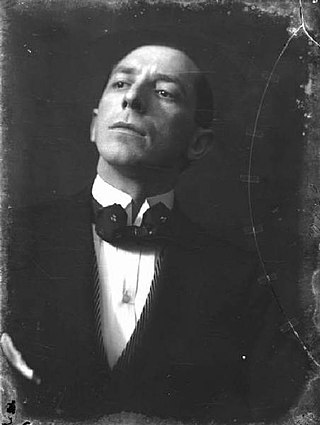
Umberto Boccioni was an influential Italian painter and sculptor. He helped shape the revolutionary aesthetic of the Futurism movement as one of its principal figures. Despite his short life, his approach to the dynamism of form and the deconstruction of solid mass guided artists long after his death. His works are held by many public art museums, and in 1988 the Metropolitan Museum of Art in New York City organized a major retrospective of 100 pieces.
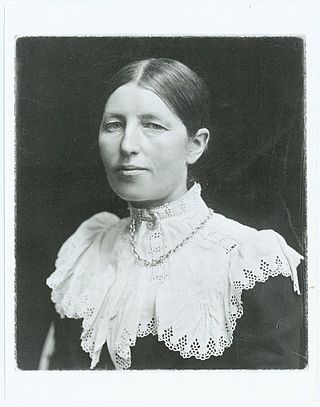
Anna Ancher was a Danish artist associated with the Skagen Painters, an artist colony on the northern point of Jylland, Denmark. She is considered to be one of Denmark's greatest visual artists.

Sabin Bălașa was a contemporary Romanian painter. His works were described by himself as belonging to cosmic Romanticism.

The Milkmaid, sometimes called The Kitchen Maid, is an oil-on-canvas painting of a "milkmaid", in fact, a domestic kitchen maid, by the Dutch artist Johannes Vermeer. It is in the Rijksmuseum in Amsterdam, the Netherlands, which regards it as "unquestionably one of the museum's finest attractions".
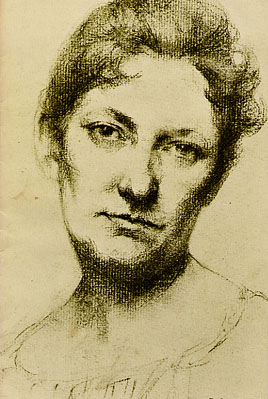
Minerva Josephine Chapman (1858–1947) was an American painter. She was known for her work in miniature portraiture, landscape, and still life.

Uemura Shōen was the pseudonym of an artist in Meiji, Taishō and early Shōwa period Japanese painting. Her real name was Uemura Tsune. Shōen was known primarily for her bijin-ga, or paintings of beautiful women, in the nihonga style, although she produced numerous works on historical themes and traditional subjects. Shōen is considered a major innovator in the bijin-ga genre despite the fact she often still used it to depict the traditional beauty standards of women. Bijin-ga gained criticism during the Taisho era while Shōen worked due to its lack of evolution to reflect the more modern statuses of women in Japan. During bijin-ga's conception in the Tokugawa, or Edo, period, women were regarded as lower class citizens and the genre often reflected this implication onto its female subjects. Within the Taisho era, women had made several advancements into the Japanese workforce, and artistry specifically was becoming more popular outside of pass times for the elite, which opened way for Shōen's success. Shōen received many awards and forms of recognition during her lifetime within Japan, being the first female recipient of the Order of Culture award, as well as being hired as the Imperial Household's official artist, which had previously only employed one other official woman in the position. In 1949 she died of cancer just a year after receiving the Order of Culture Award.

Woman with a Water Jug, also known as Young Woman with a Water Pitcher, is a painting finished between 1660–1662 by the Dutch painter Johannes Vermeer in the Baroque style. It is oil on canvas, 45.7cm × 40.6 cm, and is on display at the Metropolitan Museum of Art, New York.

Giuseppe Nogari was an Italian painter of the Rococo. He painted mainly painted half-body portraits, either real or of historical and religious figures. They are striking for their emotional content, subdued decoration and coloration, and often display aged individuals in somewhat homely or shabby attire with a dark background.

The Ugly Duchess is a satirical portrait painted by the Flemish artist Quinten Matsys around 1513.
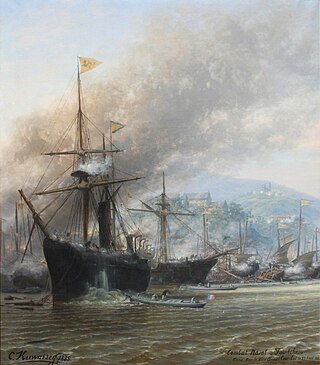
Charles Euphrasie Kuwasseg was a French painter of the 19th century. He essentially specialized in landscape paintings - particularly the coastal landscapes of Brittany and Normandy. His father, Karl Joseph Kuwasseg, was an Austrian born in Trieste on March 16, 1802, and also a renowned painter. His father left for Paris, and took French nationality. He died in Paris in January 1877.

Portrait of a Lady is a small oil-on-oak panel painting executed around 1460 by the Netherlandish painter Rogier van der Weyden. The composition is built from the geometric shapes that form the lines of the woman's veil, neckline, face, and arms, and by the fall of the light that illuminates her face and headdress. The vivid contrasts of darkness and light enhance the almost unnatural beauty and Gothic elegance of the model.
Madame Grès (1903–1993), also known as Alix Barton and Alix, was a leading French couturier and costume designer, founder of haute couture fashion house Grès as well as the associated Parfums Grès. Remembered as the "Sphinx of Fashion", Grès was notoriously secretive about her personal life and was seen as a workaholic with a furious attention to detail, preferring to let her work do the talking. Grès, best known for her floor-length draped Grecian goddess gowns, is noted as the "master of the wrapped and draped dress" and the "queen of drapery". Grès's minimalistic draping techniques and her attention to and respect for the female body have had a lasting effect on the haute couture and fashion industry, inspiring a number of recent designers.
Guglielmo Janni (1892–1958) was an Italian painter belonging to the modern movement of the Scuola romana .

Woman with a Pearl Necklace by Johannes Vermeer is a Dutch Golden Age painting of about 1664. Painted in oils on canvas, Johannes Vermeer portrayed a young Dutch woman, most likely of upper-class descent, dressing herself with two yellow ribbons, pearl earrings, and a pearl necklace. As a very popular artist of the 17th century, the Dutch Golden Age, Vermeer depicted many women in similar circumstances within interior, domestic scenes. The same woman also appears in The Love Letter and A Lady Writing a Letter. The painting is part of the collection of the Gemäldegalerie in Berlin.
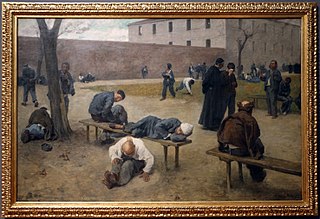
Silvio Giulio Rotta was an Italian painter. While his first canvases were light watercolors of genre subjects in his native city, that is, the daily life of Venetians; his later career focused on realistic depictions of the darker side of human nature, including the interior of insane asylums.

Andrea Tavernier was an Italian painter, mainly of landscapes and urban vedute.

Bernard Cathelin was a French painter born in Paris and a member of the School of Paris which included Picasso, Chagall, Frenel, Matisse, Dufy and many others including Maurice Brianchon, Cathelin's teacher at the Ecole Nationale Supérieure des Arts Décoratifs. Although he received critical acclaim as early as 1950, Cathelin was not able to live solely from his painting until 1955. Since that time Cathelin has received steadily increasing recognition and has been featured in over 50 exhibitions worldwide. Throughout his life, he maintained a deep-rooted love for his country and especially for the Drôme, where his mother came from.
Hans Zatzka was an Austrian Academic and fantasy painter. He has sometimes been known as P. Ronsard, Pierre de Ronsard, or H. Zabateri, and signed many of his works as Joseph Bernard, J. Bernard, or Bernard Zatzka. The purpose of Zatzka's vast array of pseudonyms was to avoid penalties of breaking contracts which limited the amount of artwork he could sell. This has caused some art databases to conflate Zatzka's work under the pseudonym Joseph Bernard with the French sculptor with the same name.
Lilith is an 1887 painting by English artist John Collier, who worked in the style of the Pre-Raphaelite Brotherhood. The painting of the Jewish mythic figure Lilith is held in the Atkinson Art Gallery in Southport, England. It was transferred from Bootle Art Gallery in the 1970s.
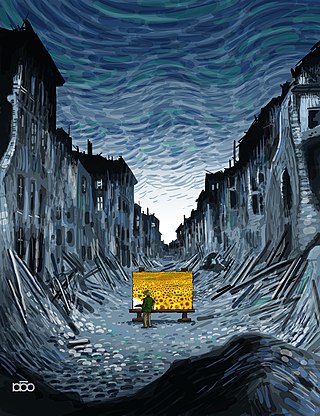
Alireza Karimi Moghaddam is a cartoonist and illustrator. He is best known as the creator of a cartoon character representing the Dutch painter Vincent van Gogh. He has a master's degree in graphic design. He works as a lecturer in graphic design at the Azad University. As of 2021, he lives in Lisbon.